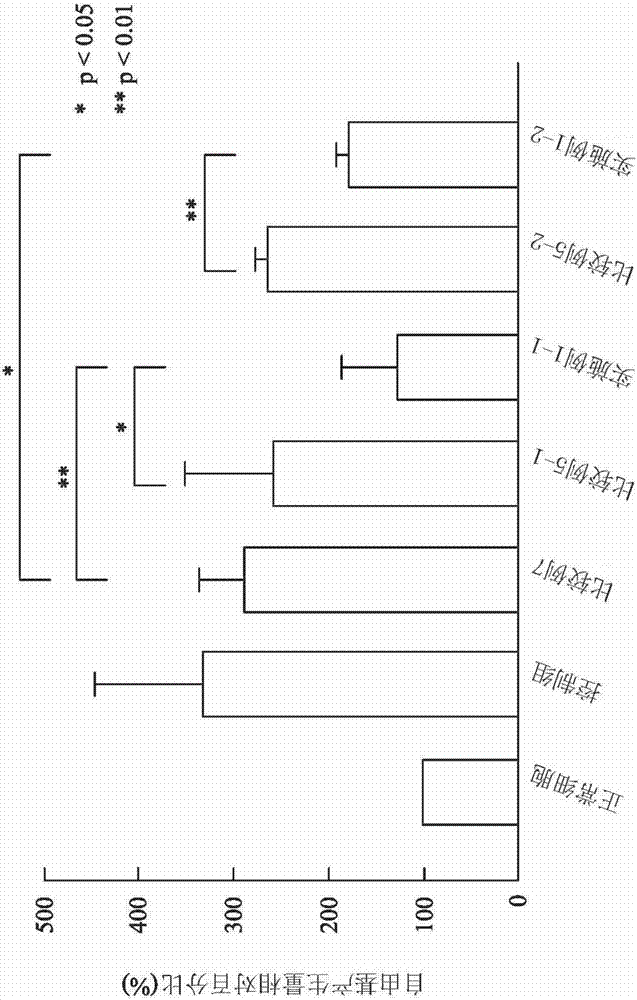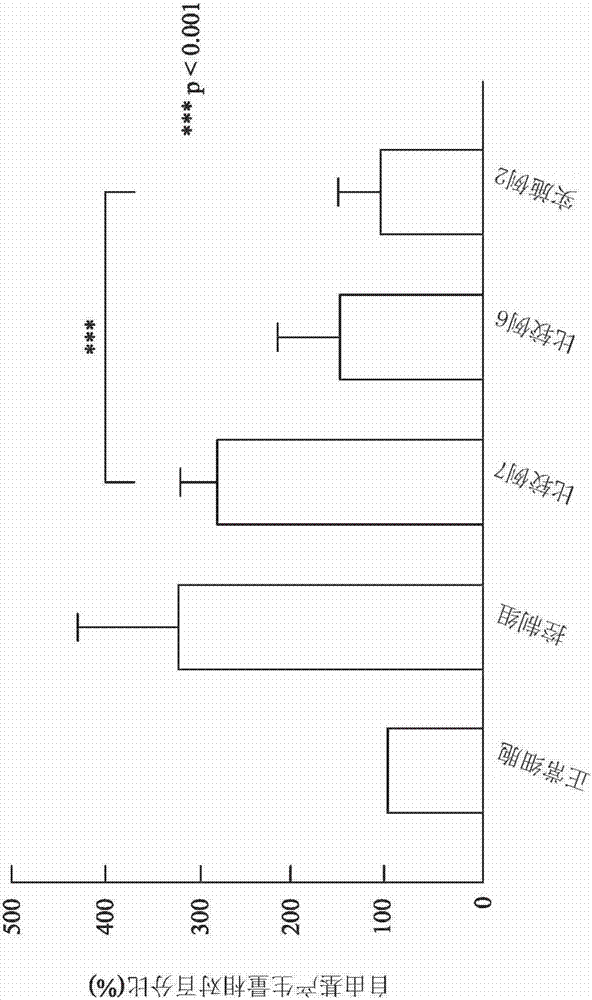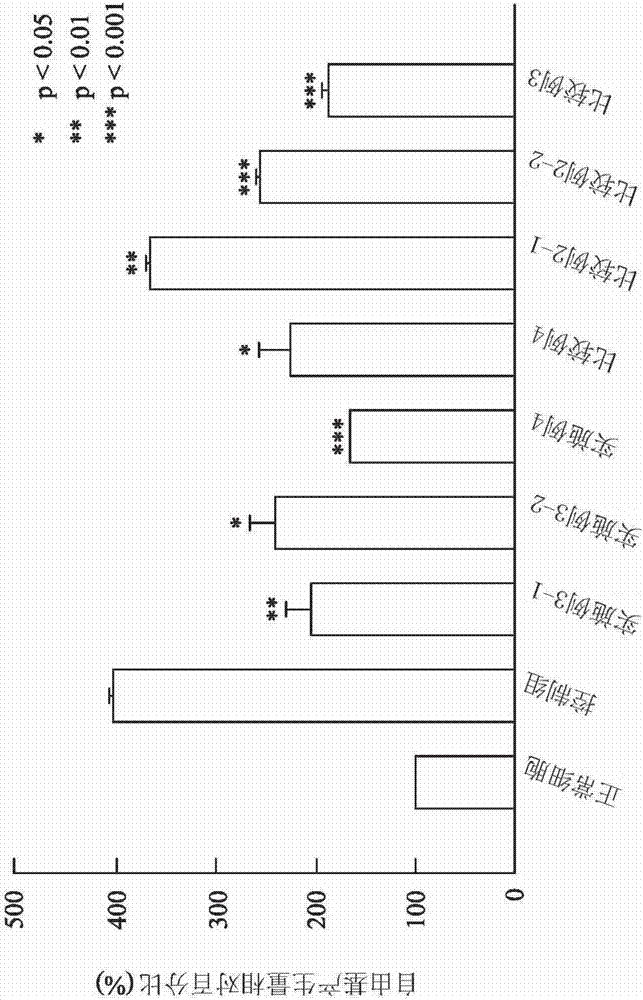Medicinal composition for preventing or alleviating diabetes and complications thereof
A technology for diabetes and complications, applied in the field of pharmaceutical compositions, can solve the problems of low bioavailability, poor effect, inability to effectively prevent or slow down diabetes, etc.
- Summary
- Abstract
- Description
- Claims
- Application Information
AI Technical Summary
Problems solved by technology
Method used
Image
Examples
Embodiment 1
[0048] Example 1: Establishment of an in vitro cell platform
[0049] 1. Cultivating kidney epithelial cell line MDCK
[0050] The kidney epithelial cell line MDCK (Canine Kidney Epithelial Cell Line Madin-Darby caninekidney; MDCK; for example, obtained from the Taiwan Biological Resources Conservation and Research Center with the deposit number CCRC60004; ATCC CCL-34), according to the Taiwan Food Industry Development Institute Biological Resources Conservation And recommended by the research center, cultured in Fetal Bovine Serum (FBS) containing 10%, 1.2mg / mL NaHCO 3 , 0.1mg / mL streptomycin (streptomycin) n and 0.5mg / mL ampicillin (ampicillin), pH 7.4 MEM minimum essential medium (minimal essential medium, MEM; BRL, Grand Island, NY) culture medium, placed in 5% CO 2 , Cultivation in a constant temperature incubator (NUAIR NU4500, USA) at 37°C, and replace with fresh culture medium every 2 to 3 days. When the cells grow to about 90% full, wash the cells gently with Phosphate Bu...
Embodiment 2
[0063] Example 2: In vitro evaluation method of medical composition containing soybean isoflavones and peanut p-styrene derivatives
[0064] This example is to use the in vitro high-concentration glucose culture solution treatment platform established in Example 1 to evaluate that the pharmaceutical composition containing soybean isoflavones and peanut p-styrene derivatives in Example 1 reduces the amount of blood in the kidney epithelial cell line MDCK cells. The amount of free radicals produced.
[0065] 1. Assess the amount of free radicals produced in cells
[0066] Using anhydrous DMSO, 2,7-dichlorofluorescein-3',6'-diacetate (2,7-dichlorofluoresceindiacetate; H2DCF-DA; Invitrogen, USA) was prepared into a 10mM / μL solution. After washing the MDCK cell line with PBS, adding PBS containing a final concentration of 10μM H2DCF-DA, reacting for 30 minutes in a constant temperature incubator at 37°C, washing with PBS, adding MEM without phenol red ( BRL, Grand Island, NY). After rea...
Embodiment 3
[0070] Example 3: Using animal experiments to evaluate the effect of medical composition in preventing or reducing diabetes and its complications
[0071] This example uses living experimental animals to evaluate the effect of the pharmaceutical composition containing soybean isoflavones and peanut p-styrene derivatives of Example 1 in preventing or reducing diabetes and its complications in vivo.
[0072] 1. Establish experimental animals
[0073] 1.1 Animal feeding
[0074] 48 6-week-old Specific Pathogen-Free (SPF) mice (strain: C57BL / 6); source: National Laboratory Animal Center), each group has 6 male mice and 6 female mice Rats were randomly grouped as shown in Table 2:
[0075] Table 2
[0076]
[0077]
[0078] C57BL / 6 mice were raised in a positive pressure environment free of specific pathogens. The temperature was controlled at 24°C and maintained at a 12-hour light-dark cycle. Feed and water supply were not restricted during the breeding period. The breeding conditions of C...
PUM
 Login to View More
Login to View More Abstract
Description
Claims
Application Information
 Login to View More
Login to View More - R&D
- Intellectual Property
- Life Sciences
- Materials
- Tech Scout
- Unparalleled Data Quality
- Higher Quality Content
- 60% Fewer Hallucinations
Browse by: Latest US Patents, China's latest patents, Technical Efficacy Thesaurus, Application Domain, Technology Topic, Popular Technical Reports.
© 2025 PatSnap. All rights reserved.Legal|Privacy policy|Modern Slavery Act Transparency Statement|Sitemap|About US| Contact US: help@patsnap.com



